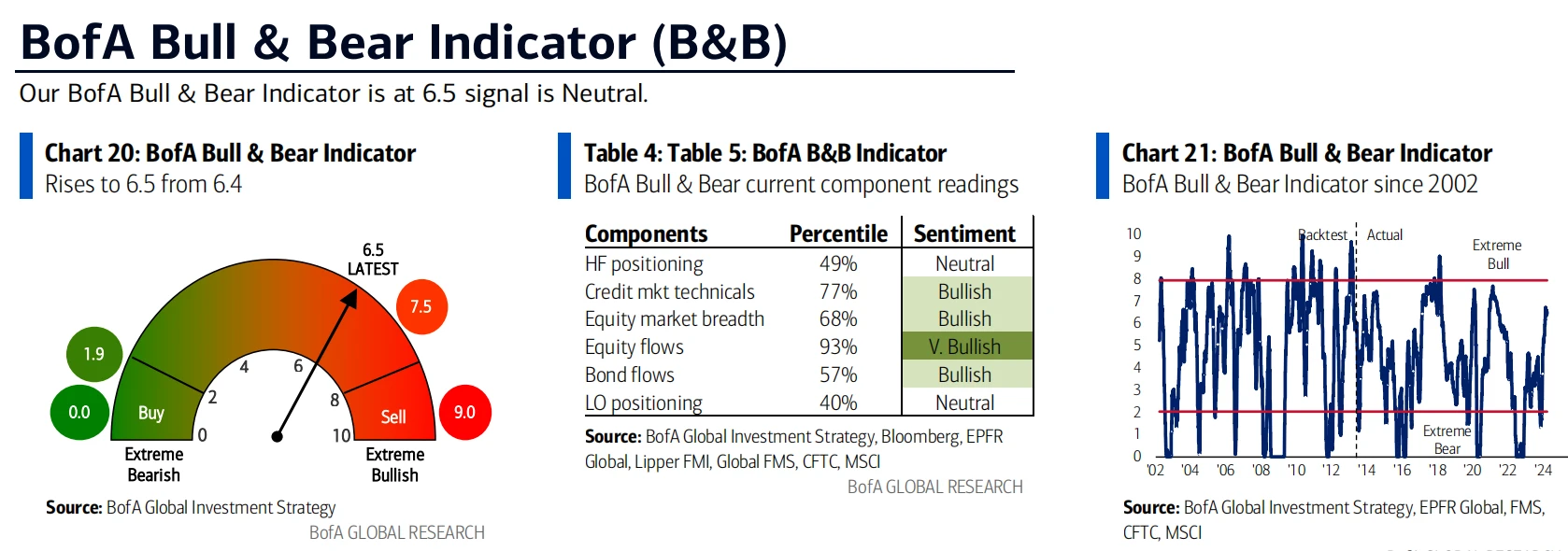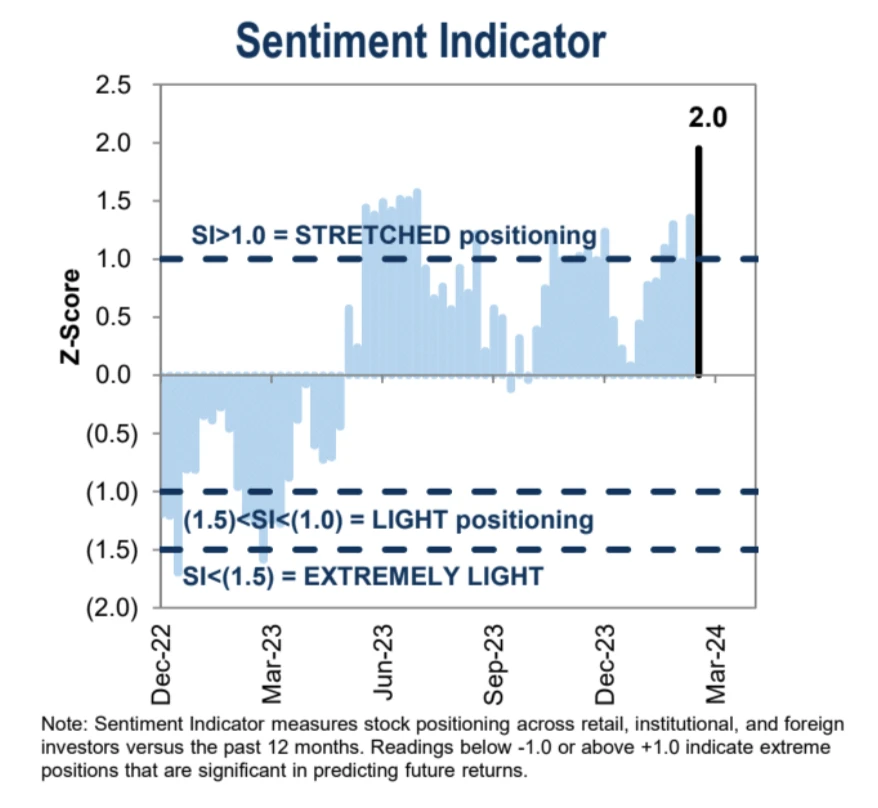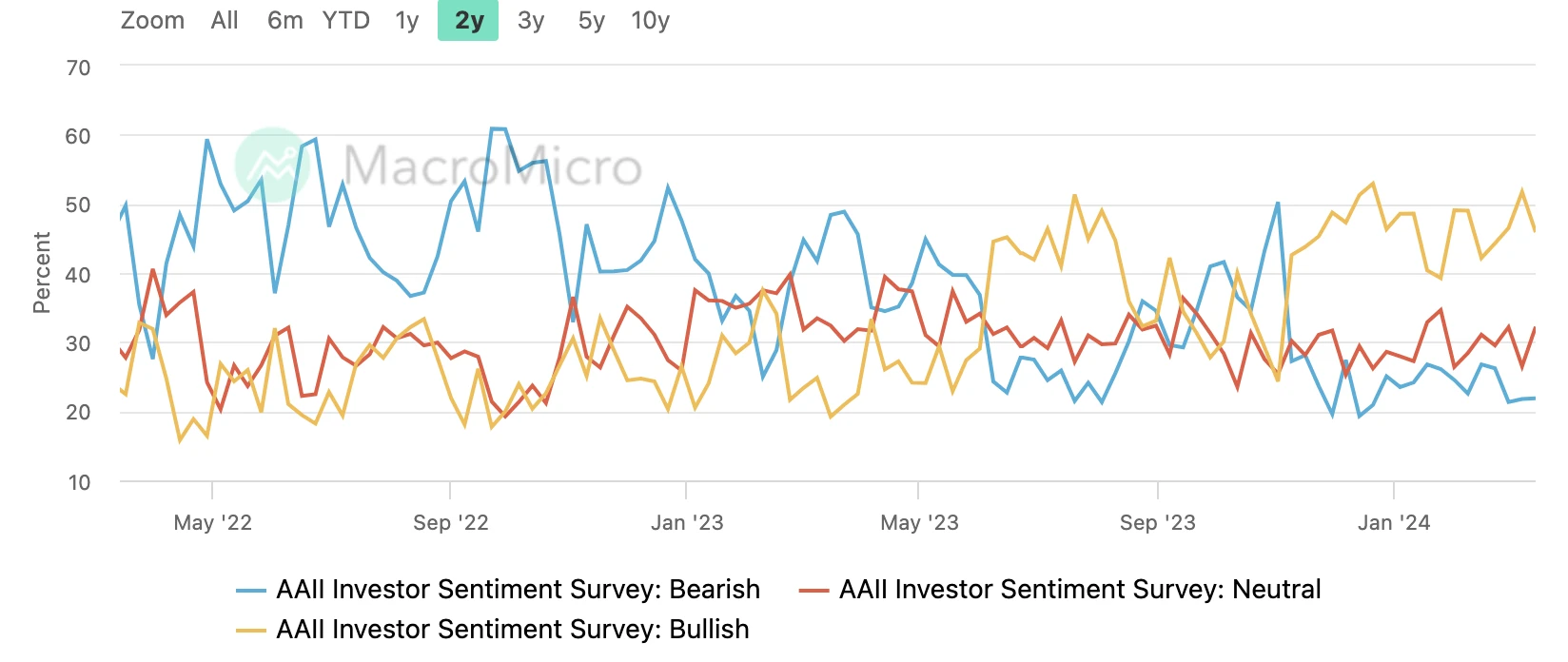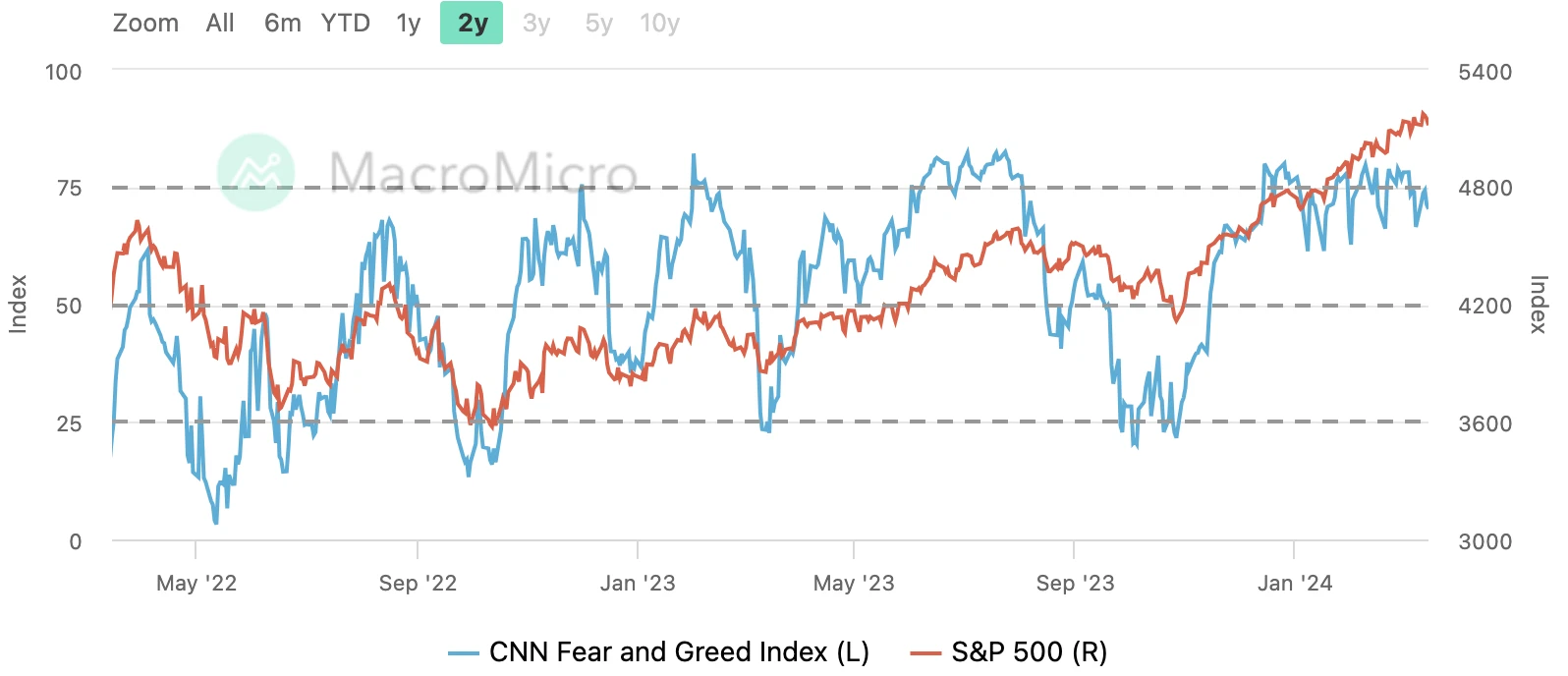
Global Market Overview
The A-share market as a whole was volatile and differentiated, showing a shallow V trend, and closed slightly higher this week. The Hong Kong stock market first rose and then fell, closing overall higher. The increase was greater than that of the A-share market. During the period, the unexpected CPI and import and export data boosted sentiment, and the financing support of Vanke from many banks eased market concerns. Foreign investors have been bullish on the Chinese stock market.
Although technology stocks with better performance once led the stock market to rebound, due to both CPI and PPI exceeding expectations, the markets expectations for continuous easing have cooled down. The three major U.S. stock indexes collectively closed down this week; while inflation growth in Germany and France slowed down, the overall European stock market closed higher. The average pay raise Japans haruto have received so far is 5.28%, a 30-year high. Analysts believe this may prompt the Bank of Japan to raise interest rates in March, putting Japanese stocks under slight pressure.
Chip stocks fell for three days in a row. BTC hit a record high of $73,600 on Wednesday and then fell back to as low as $64,500 (-12%), continuing its weakness over the weekend.
The 10-year treasury bond yields of major countries in the United States and the Eurozone rose significantly this week, with the 10-year U.S. bond exceeding 4.3% and returning to its high point a month ago. The Feds front-running deal appears to have failed once again, with inflations stubbornness forcing investors to make adjustments.
WTI crude oil prices rose 4% this week, and copper prices rose 6%, mainly supported by possible tighter supply after Chinese smelters discussed joint production cuts; gold prices fell 1%.
The U.S. dollar strengthened, but the RMB performed strongly among non-U.S. currencies, closing down only 0.14%. Compared with the euro, which fell by 0.5%, the British pound and the Australian dollar fell by 1%, and the Japanese yen fell by 1.3%.
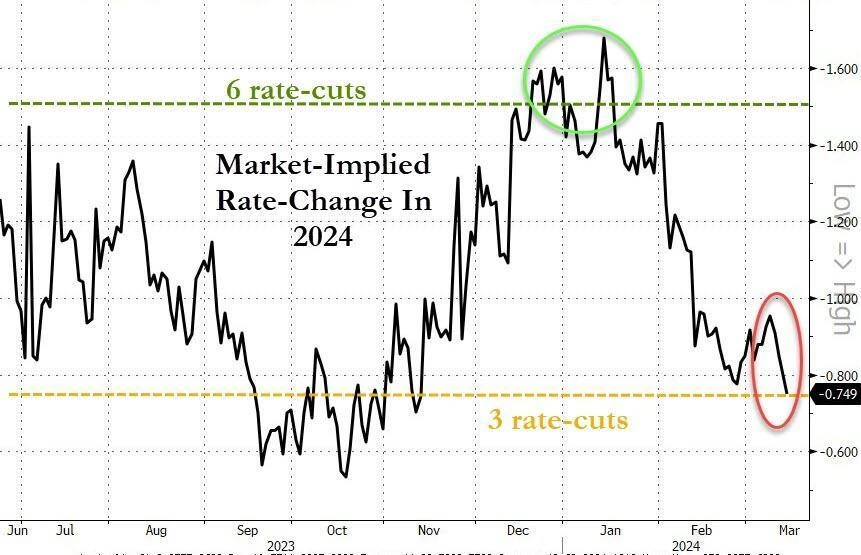
Macroscopic points
Inflation levels in some developed countries and emerging markets have risen to a certain extent. Some emerging market central banks have already begun to pause interest rate cuts. High inflation will put pressure on economic growth.
In the past year and a half, the drag on U.S. stocks has been short-lived even when CPI was higher than expected. Last weeks CPI day results were similar, but concerns about inflation and deflation were reignited after the release of PPI, although the current data is not enough to prove that inflation will rebound significantly.
However, it is indeed possible that the macro economy will shift from the Goldilocks economy (strong recovery, moderate inflation) in the fourth quarter of last year and the first quarter of this year to the stagflation in the first and second quarters of this year. The reasons why stagflation may occur in the first and second quarters of 2024 are:
2. The U.S. labor market has finally begun to cool down, as shown by:
Full-time jobs have fallen by about 3 million in the past three months
Attrition rate drops to lowest level since COVID-19 lockdowns in Q2 2020
Labor demand among small businesses also fell to its lowest level since the second quarter of 2020
A cooling job market means that economic growth momentum is weakening.
3. The United States will achieve economic growth of 3.2% and inflation of 2.x% in the fourth quarter of 2023, which is a Goldilocks ideal economic state. But entering the first quarter of 2024, U.S. economic growth may slow to below 2%, while inflation is still around 3 – 4%, thus a stagflationary combination.
4. Oil prices have significantly outperformed the Nasdaq index this year, which also confirms the market’s concerns about stagflation.
The overall/core inflation rate in the United States will still remain at 3.6-4% in June, and the market expects the Federal Reserve to cut interest rates by then, even if it is still far from 2%. In this way, the Fed acquiesces to higher inflation and can reduce the United States debt burden. But the decline in policy credibility means currency devaluation, which is the important background for cryptocurrency and gold prices to hit new highs:
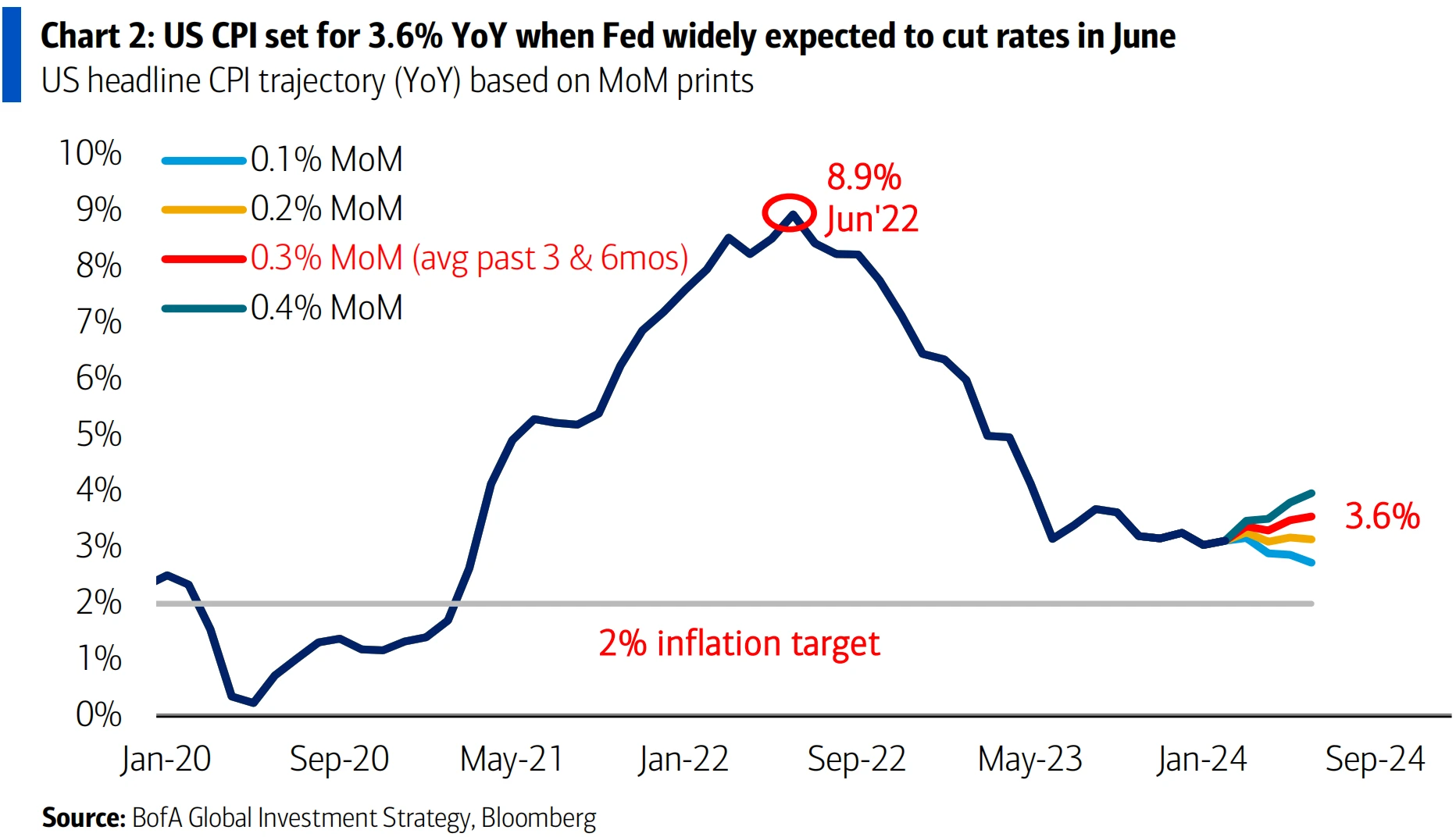
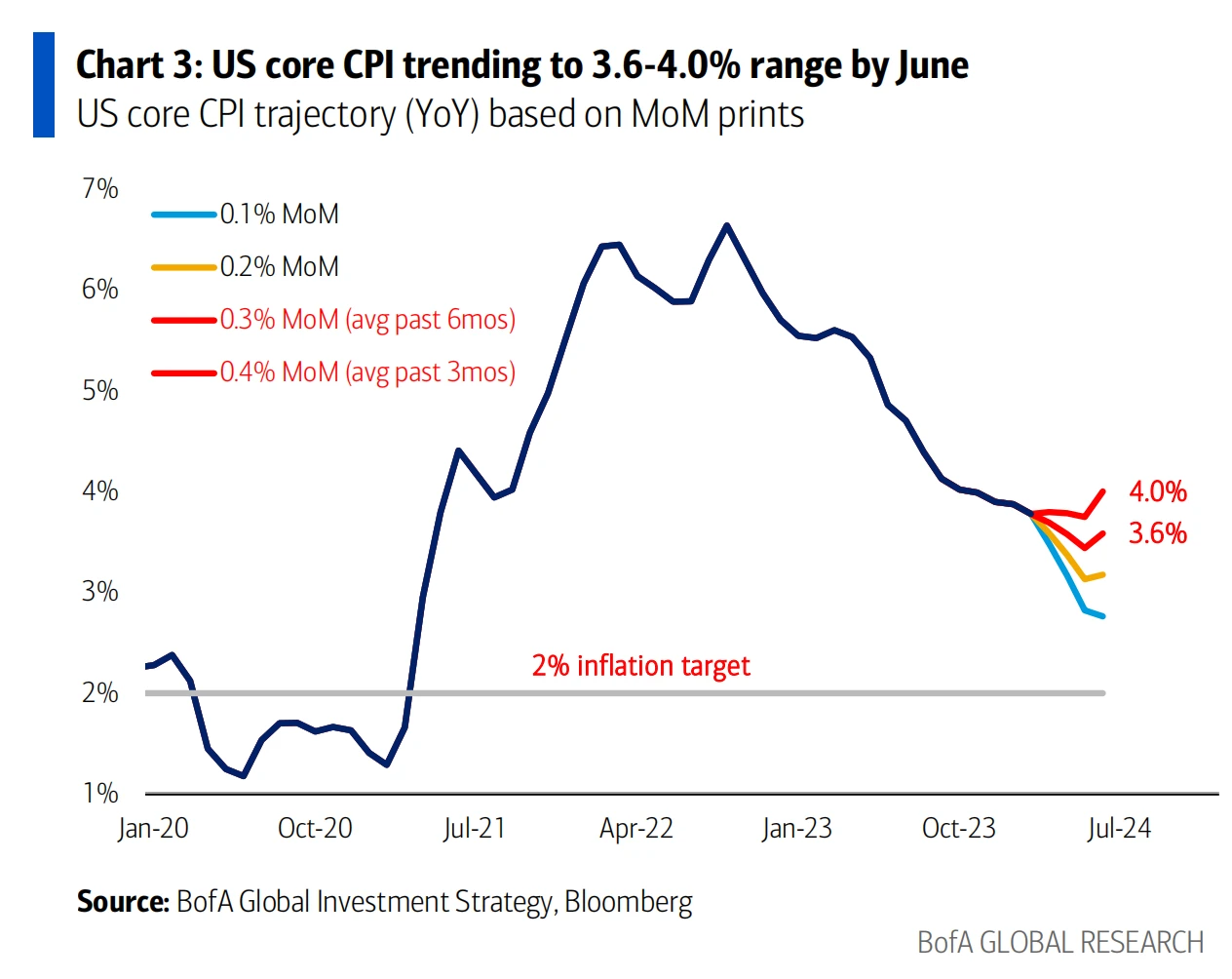
During the period of stagflation, asset allocation needs to focus on anti-inflation and defensive assets and avoid asset classes that are sensitive to economic cycles.
According to historical experience, during the stagflation period, due to weak economic growth and high inflation, there are obvious differences in the performance of different asset classes:
Assets that will rise:
Commodities: Stagflation is usually accompanied by rising commodity prices, especially agricultural products, energy and other daily necessities. Precious metals such as gold are also often favored as a hedge against inflation.
Real estate: When inflation rises, the prices of real estate and other real estate assets tend to rise to combat the risk of inflation.
Defensive stocks: stocks of companies in essential consumer fields such as daily consumption, medical care, etc., with stable cash flow and strong risk resistance.
Anti-Inflation Bonds (TIPS): The income is linked to the level of inflation and can hedge against inflation to a certain extent.
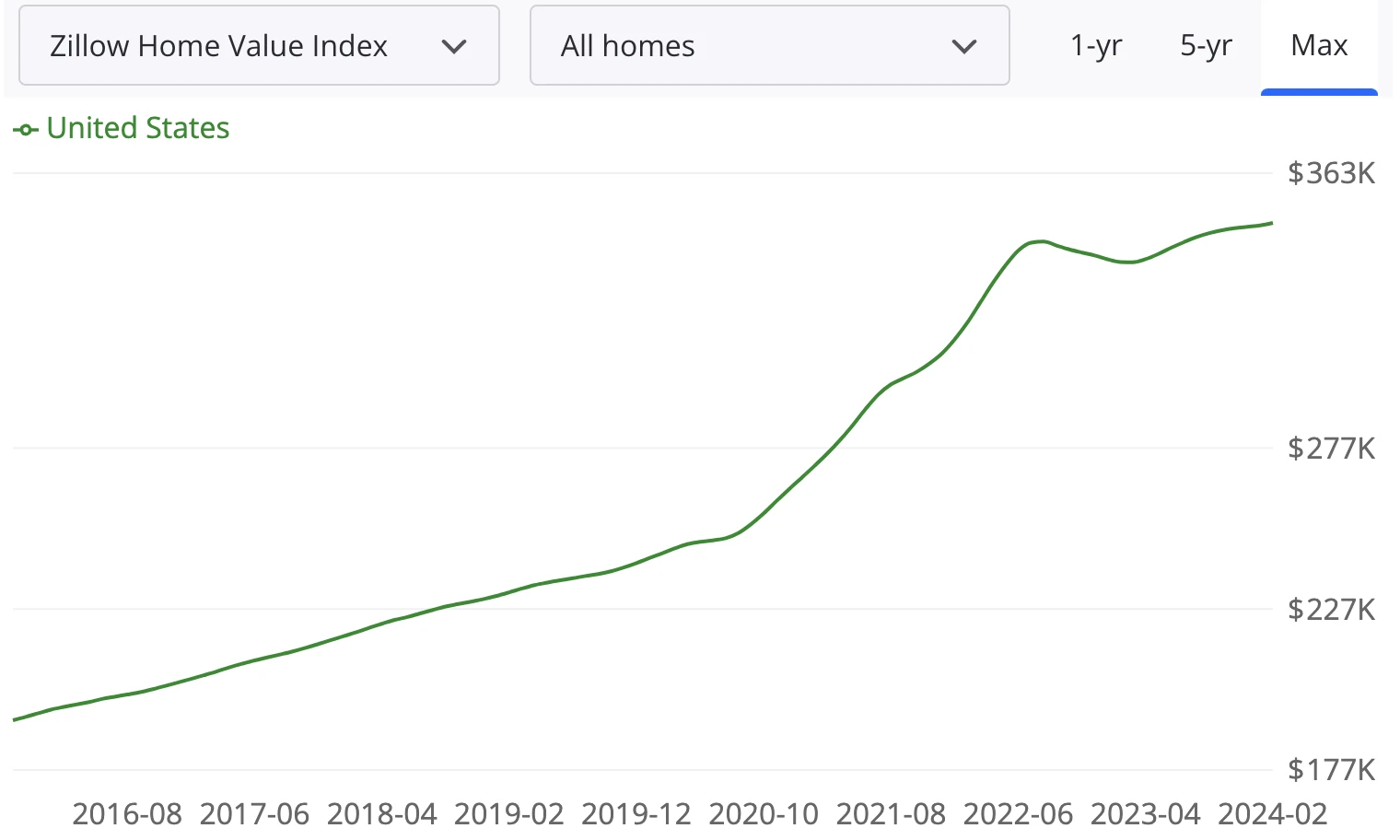
Assets that will fall:
Growth stocks: The profits of these companies are highly sensitive to economic cycles and will face greater pressure when economic growth is weak, such as technology stocks.
Regular fixed-income bonds: Rising inflation erodes a bond’s real yield, so bond prices tend to fall.
Cash: While holding cash is a defensive choice, the purchasing power of cash can be quickly diluted when inflation is high.
Optional consumer stocks: representative industries such as catering, tourism, retail, etc. When economic growth is weak and residents disposable income declines, these non-essential consumer demands tend to be compressed.
China’s liquidity has not yet been released
Although Chinas economy is stabilizing and recovering, the recovery is still moderate and the effect of monetary easing is limited. This indicates that Chinas economy will be difficult to rebound strongly in the coming period and will still face certain downward pressure. The market has been expecting the government to step up policy efforts and provide stronger support for economic recovery.
Chart – Money supply M1 and broader Li Keqiang Index:
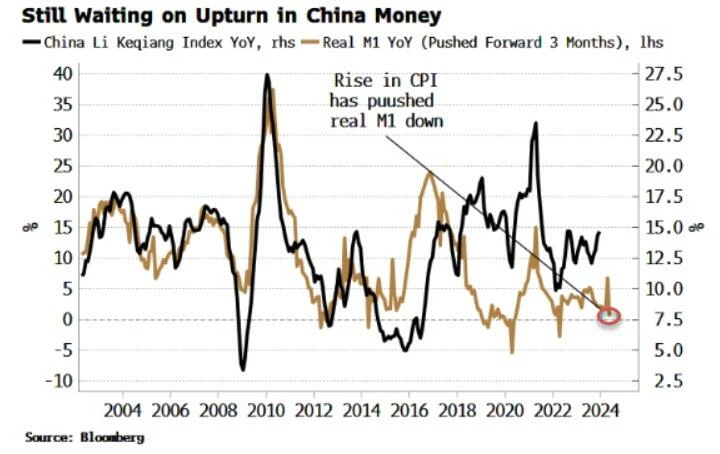
liquidity
Equity funds this week recorded their biggest weekly inflows in three years, totaling $55.7 billion, driven largely by record inflows in the United States ($56.1 billion). Inflows into bond funds slowed to a six-week low of $7.8 billion. Money market funds attracted $49.7 billion in inflows, a 10-week high.
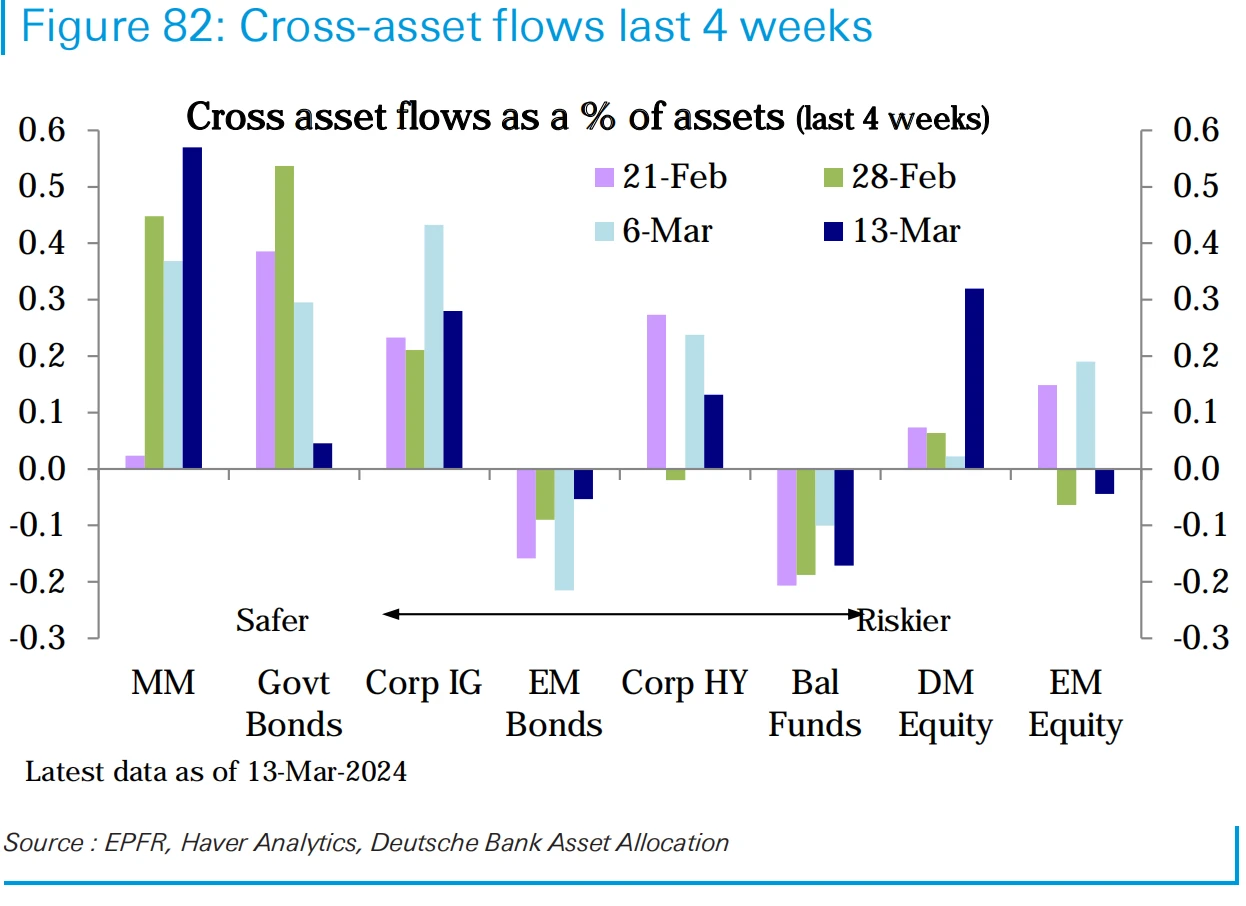
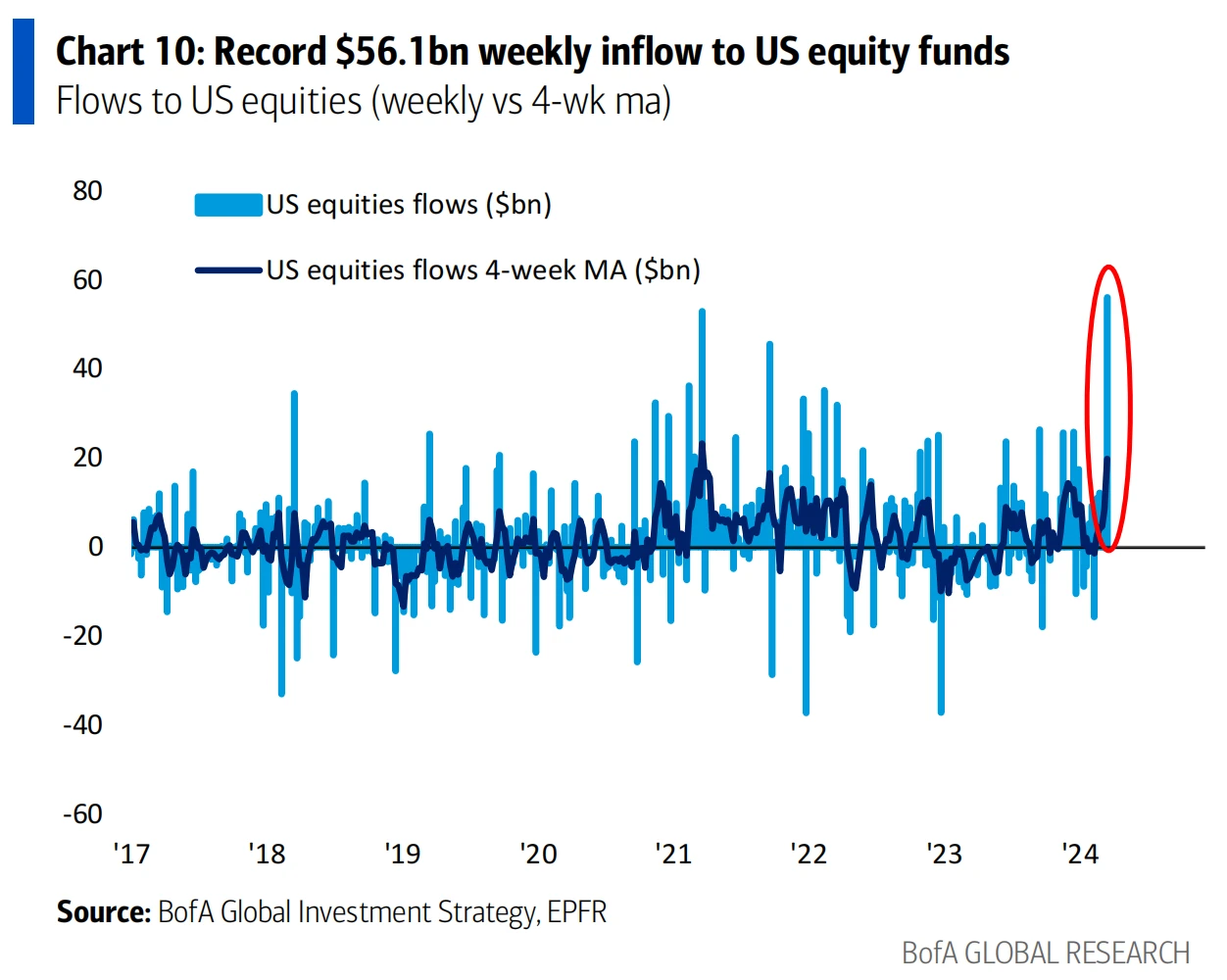
Cryptocurrency fund inflows hit another record with $3.4 billion
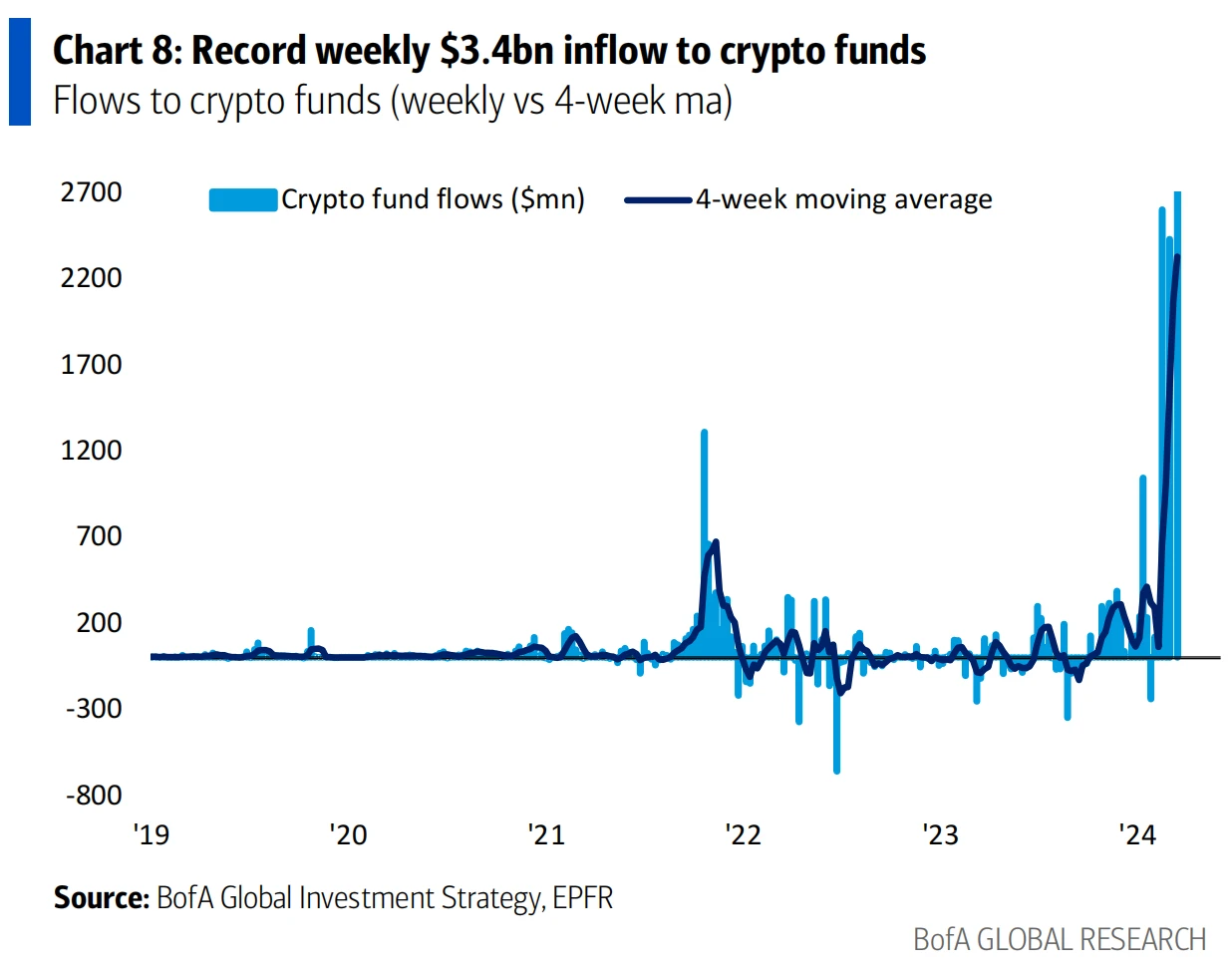
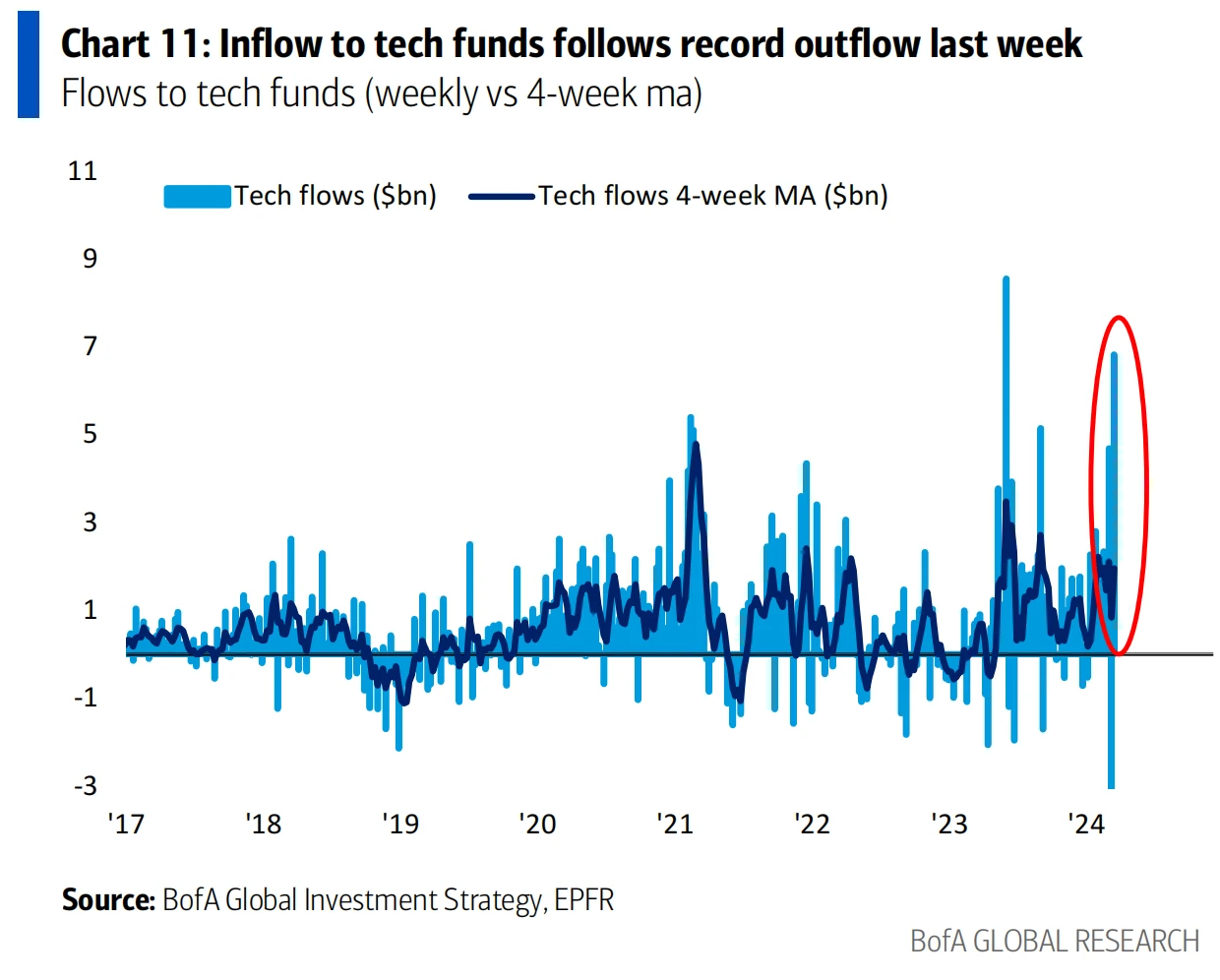
The concept of China has cooled down internationally, and value funds have slightly flowed out of Chinese stocks:
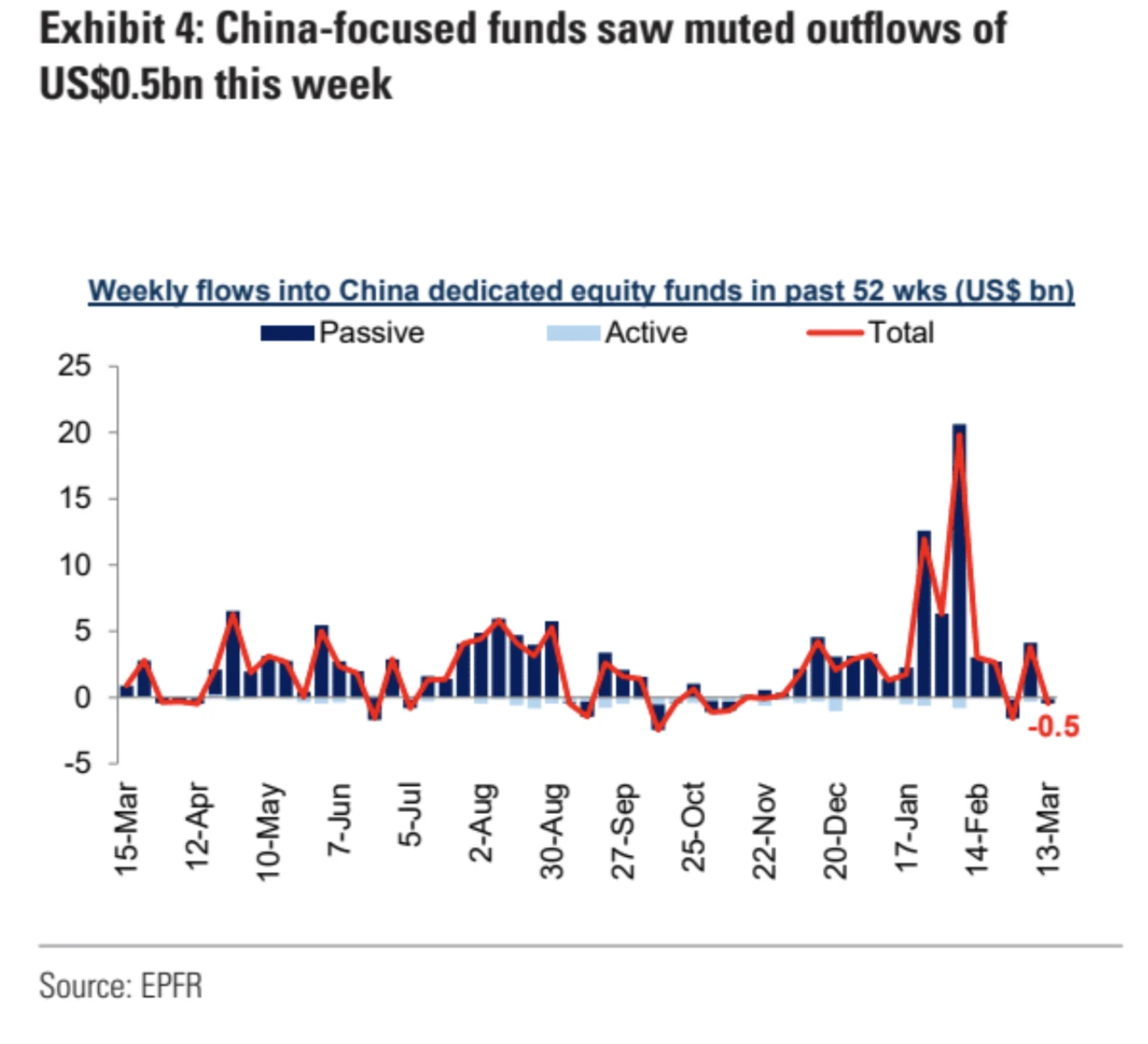
However, north-south capital flows hit a new high and remain active. Judging from the breakdown of data, trading positions have changed significantly. HSBC has mainly increased its holdings recently, while European and American investment banks have not changed much. Some, such as UBS and Goldman Sachs, have reduced their holdings. Judging from market performance, sectors such as real estate, optional consumer goods, and media and entertainment that have experienced large increases have surged, reflecting certain characteristics of short selling and covering. In addition, the increase in the weight of A-shares in the FTSE Index, which takes effect on Friday, may bring tens of millions of dollars in passive inflows, which is another reason for the large north-south capital flows.
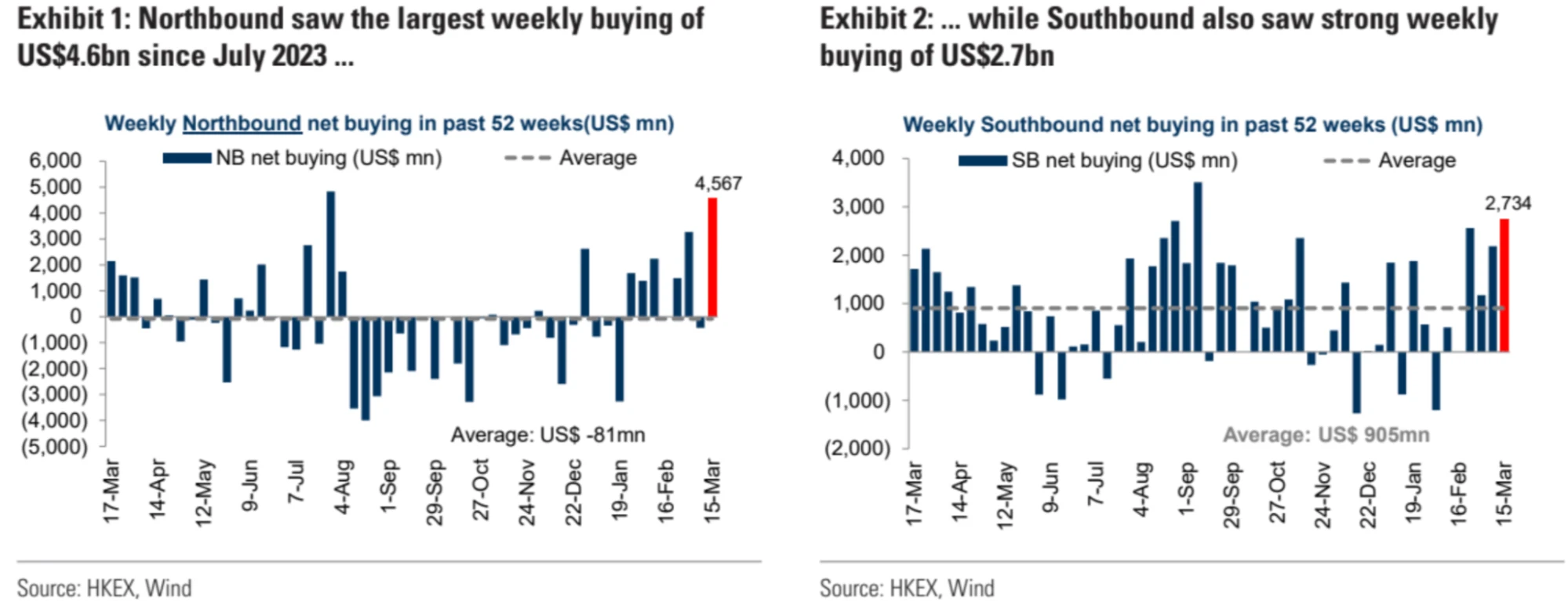
In terms of BTC spot ETF liquidity data, there was a net inflow of US$2.5 billion throughout the week, with trading volume exceeding 35 billion. Although inflows on Thursday were only 139 million, the lowest level this month, considering three consecutive days of decline and three consecutive days of net inflows, despite the slowdown, it can still be seen that buying is surging, because theoretically most It is difficult to get inflows when ETF prices fall.
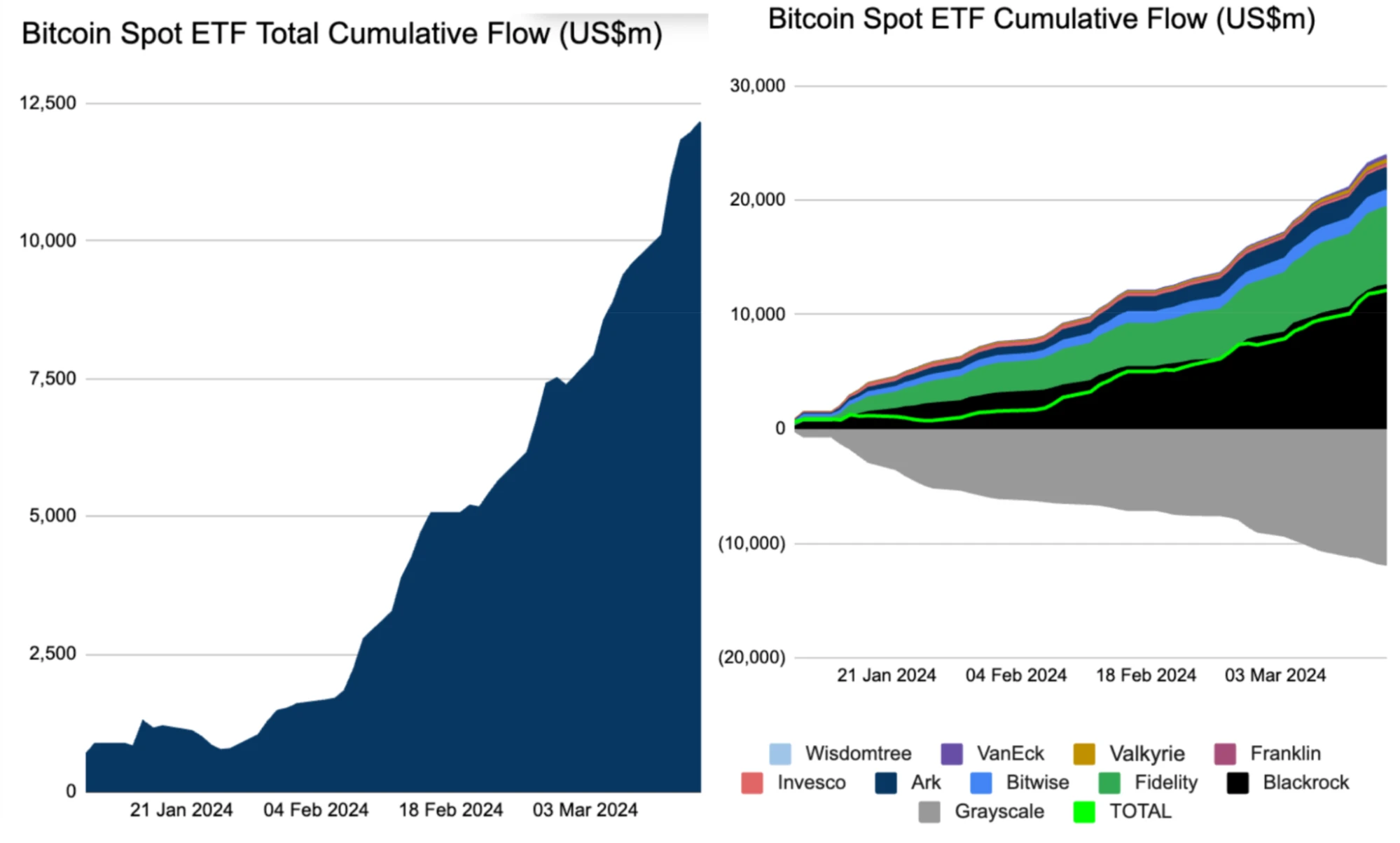
ETHEs discount to ETH narrowed from 5x% to 10% and then expanded again to 18%, mainly due to market reports that the probability of ETH Spot ETF approval in May dropped to 30%:
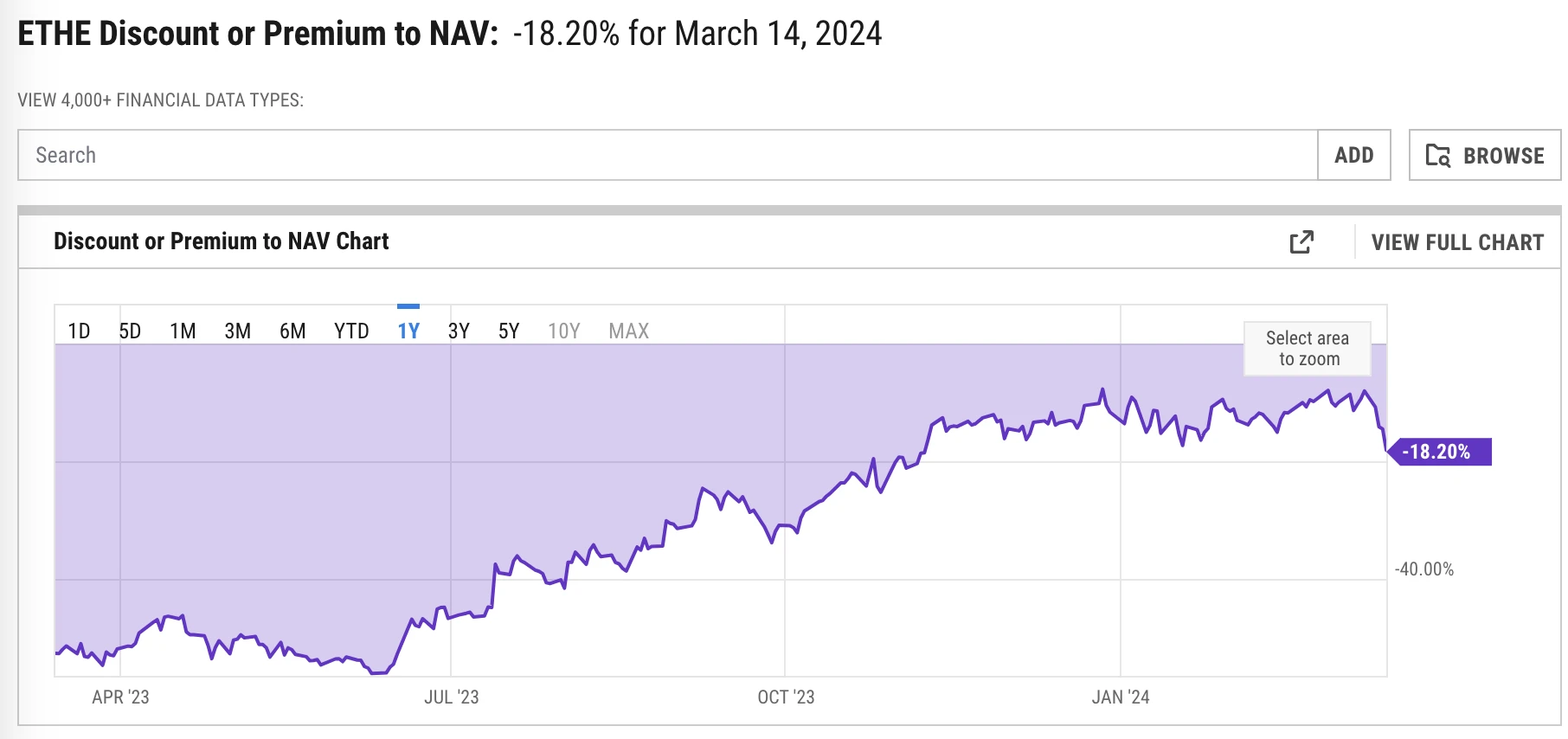
The positions of systematic strategies remained essentially unchanged (75th percentile), while those of autonomous investors decreased slightly (85th percentile):
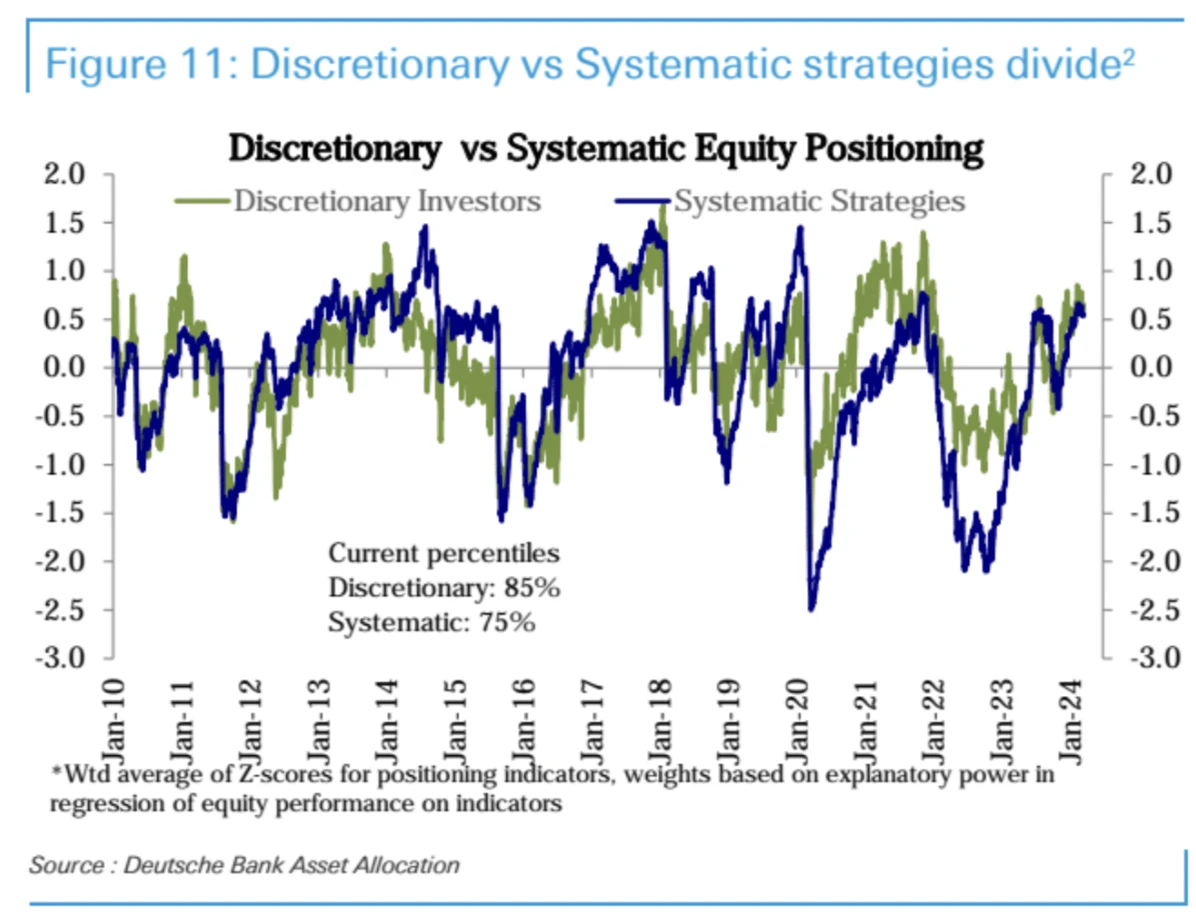
CTA fund positions are still hovering at historical highs:
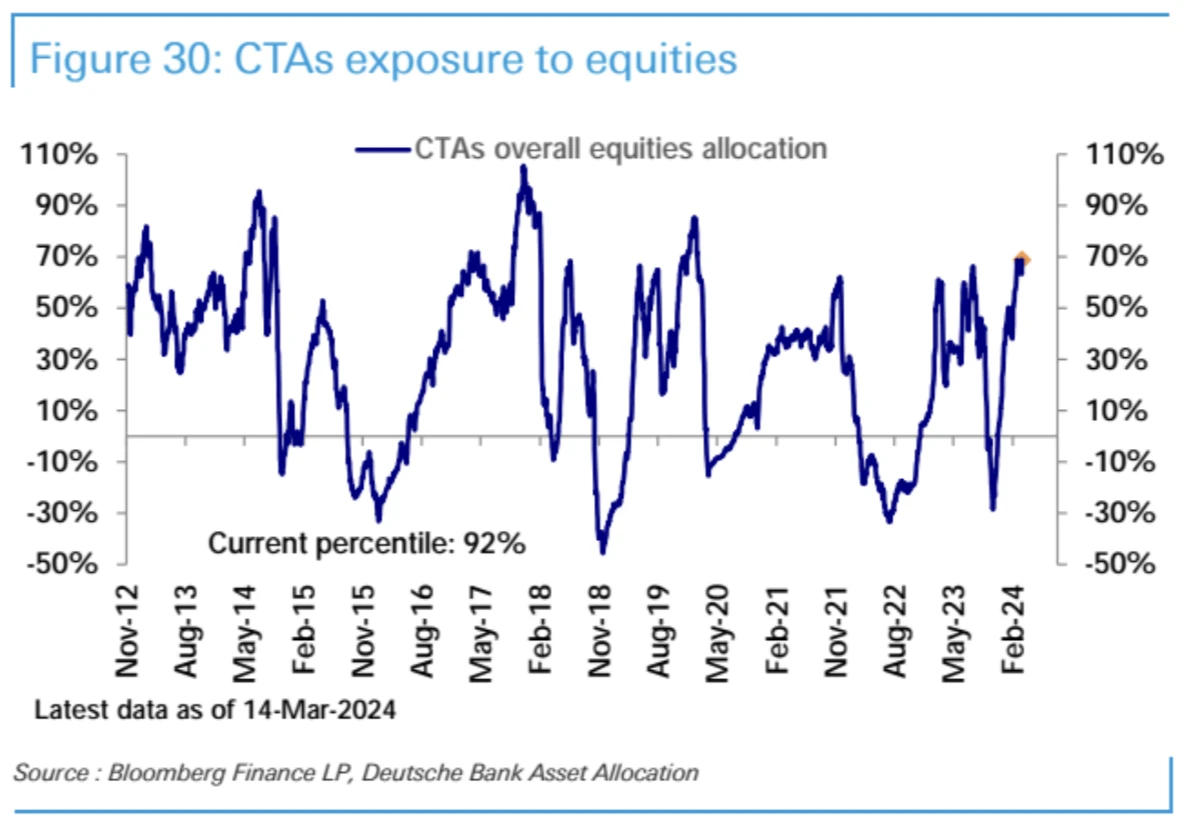
U.S. stock futures net longs fell sharply to November levels:
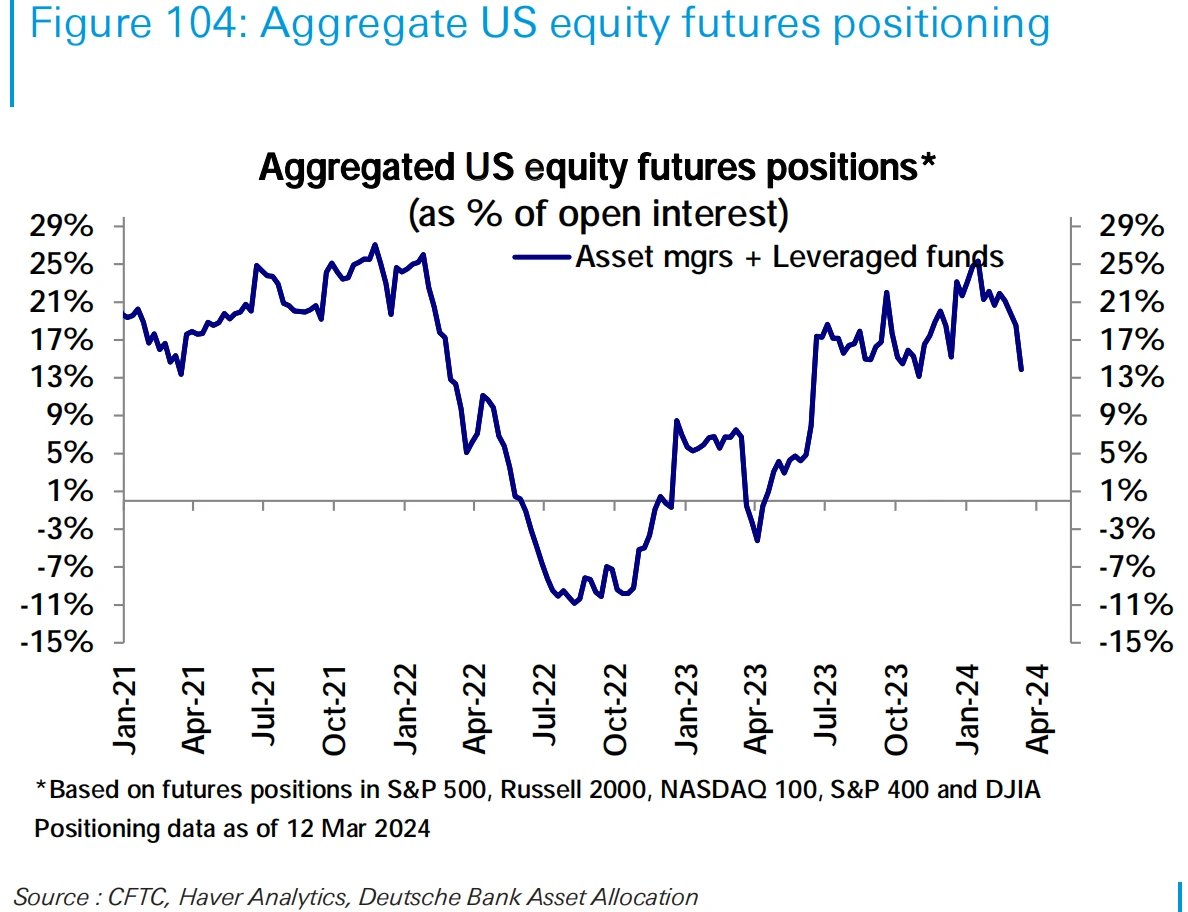
Bond futures net shorts appear to be taking advantage of the recent price declines to unwind positions aggressively:
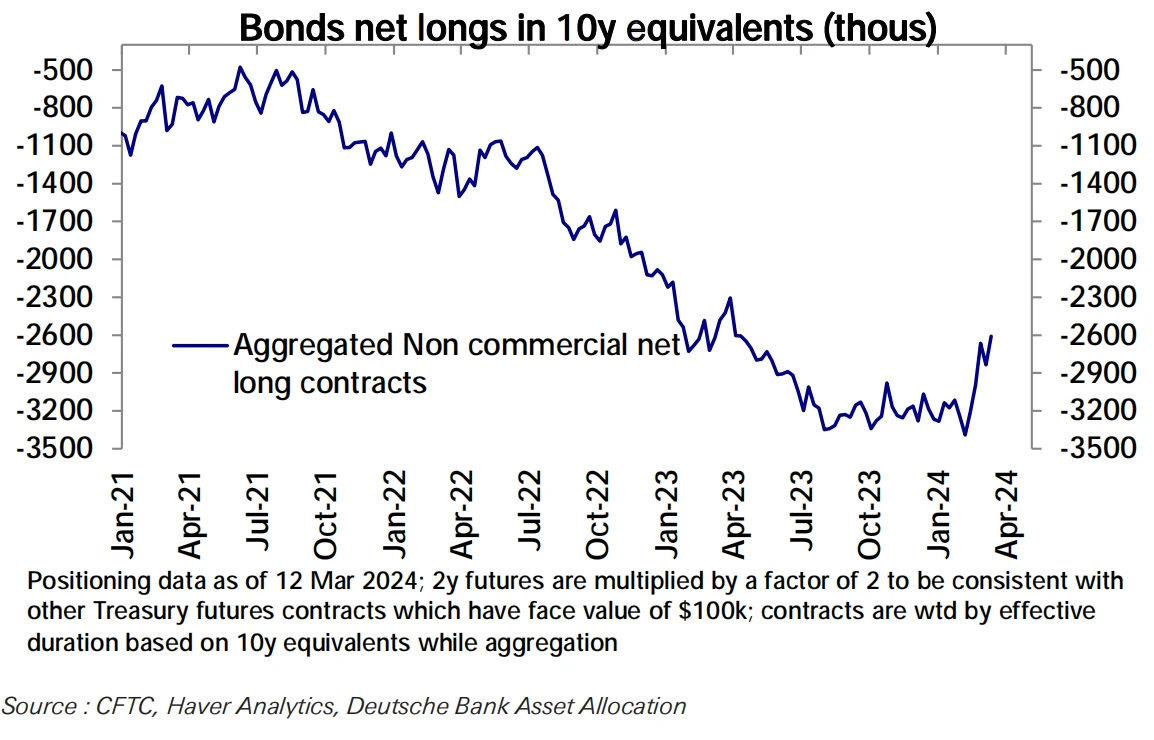
The Bitcoin CME Futures Market Leveraged Fund currently holds nearly 100,000 BTC short positions, which is slightly higher than the net long number of asset managers:
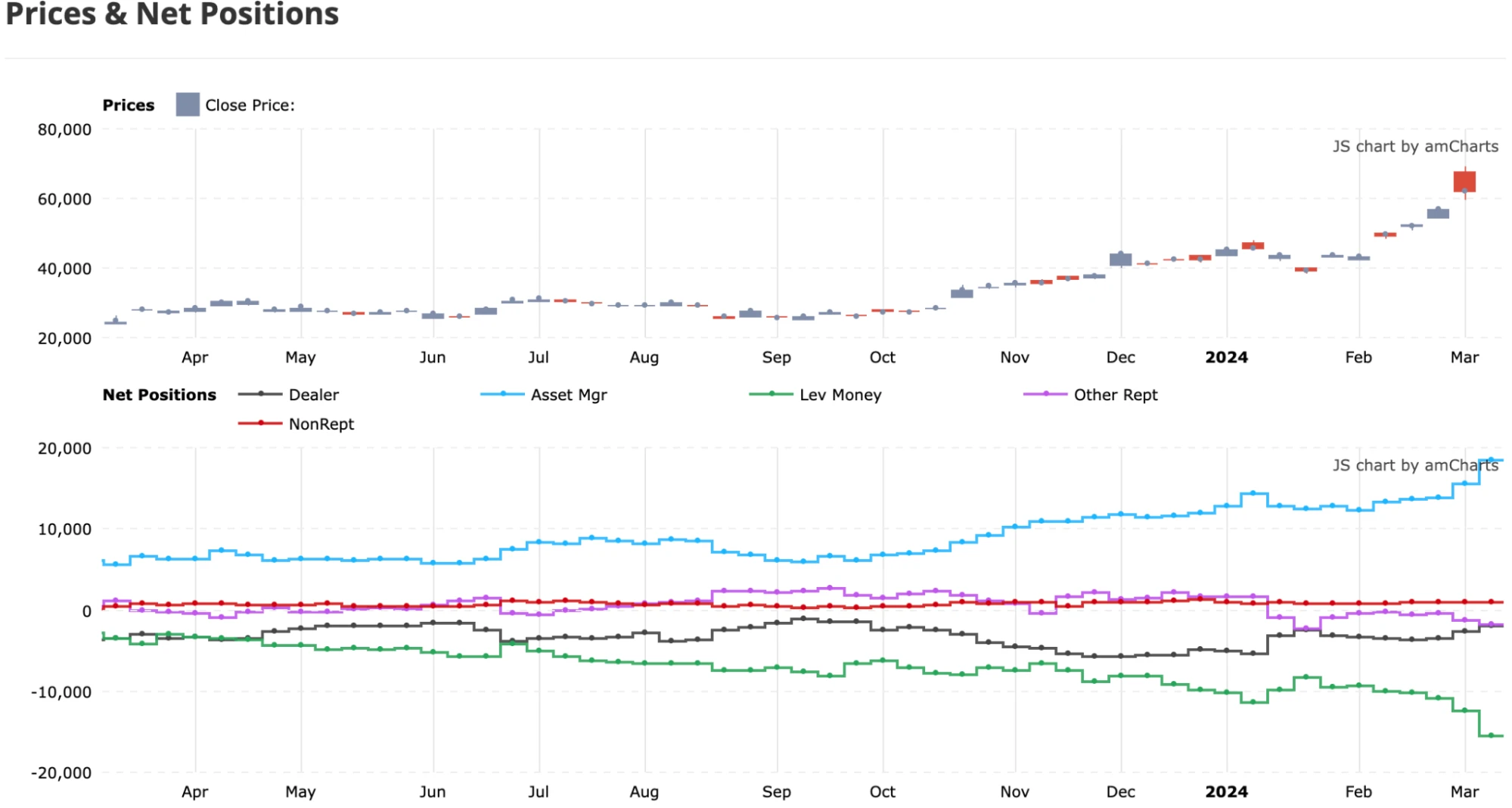
institutional perspective
Goldman Sachs: Nvidia is just the beginning, there are three major stages of AI investment worth paying attention to
Concentration in the U.S. stock market has increased significantly, with the top 10 stocks now accounting for 34% of the SP 500s market capitalization and 25% of earnings, the highest levels in decades, thanks to the outperformance of market-leading Big Tech companies.
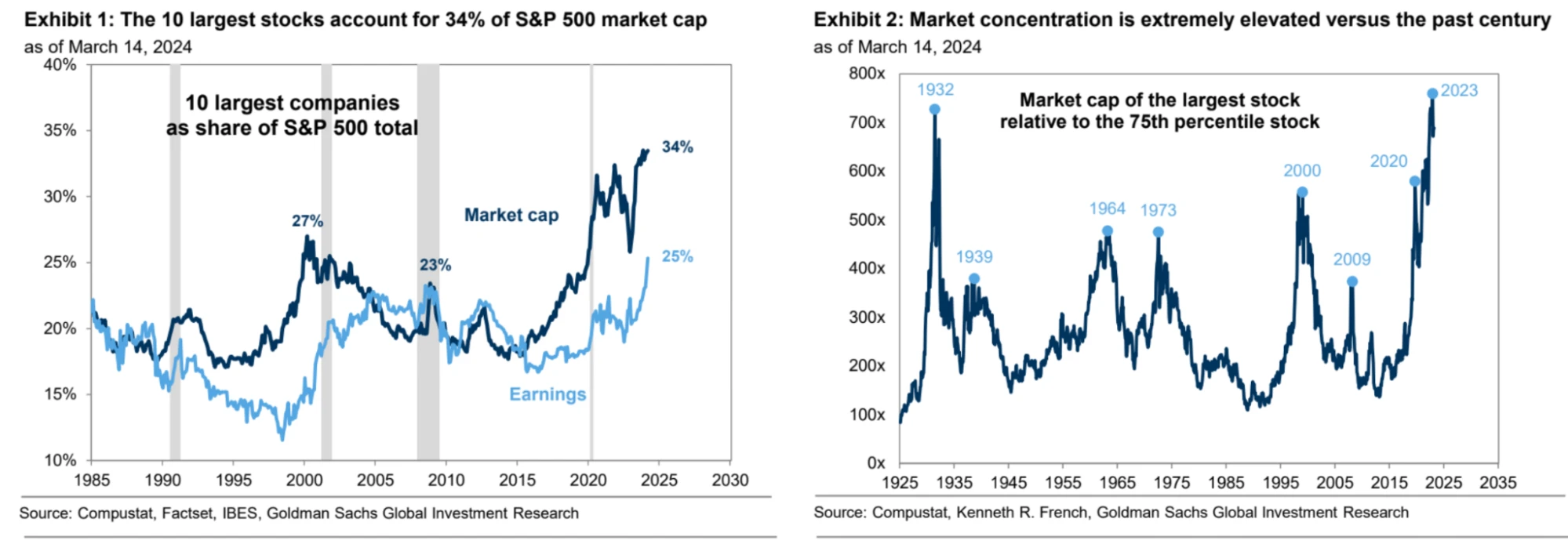
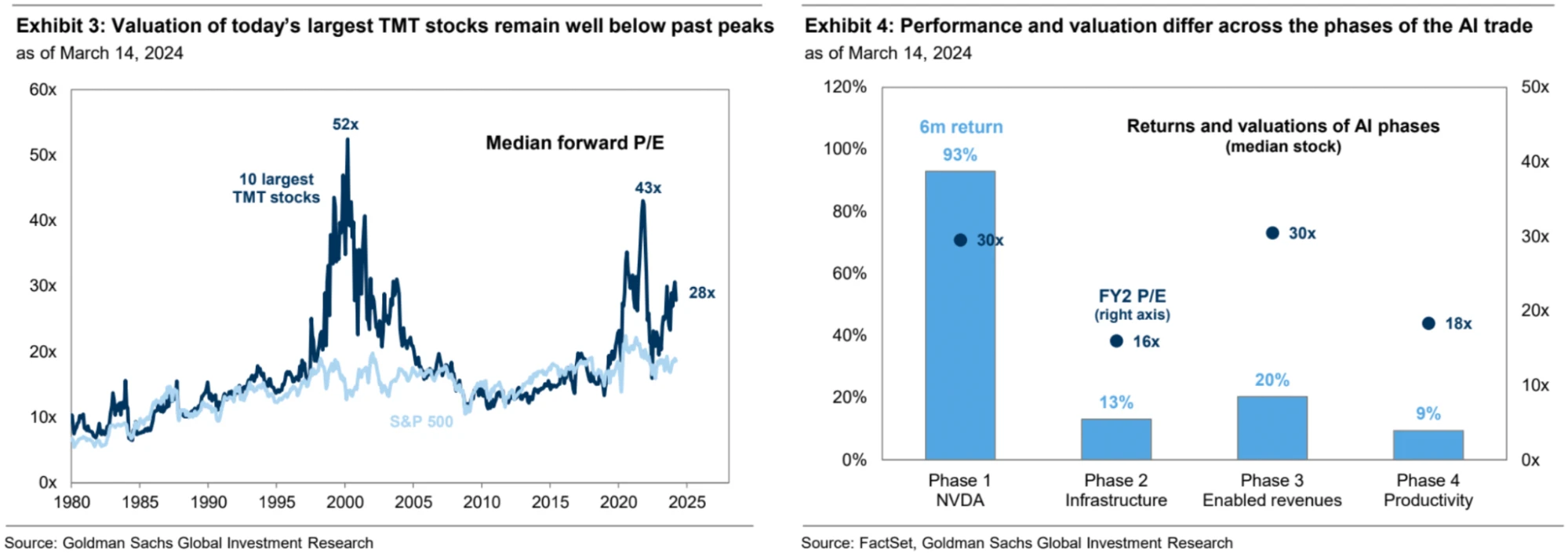
If there are no major changes in interest rates or the earnings prospects of major companies in the short term, a big rise or fall is unlikely.
Investors are advised to focus on companies at different stages of the AI value chain as a strategy to counter the risk of stock market concentration
Four stages of AI technology:
The first phase focuses on NVIDIA, and the second phase focuses on AI infrastructure outside of NV, including semiconductor companies, cloud service providers, data center REITs, hardware and equipment companies, software security stocks, and utility companies.
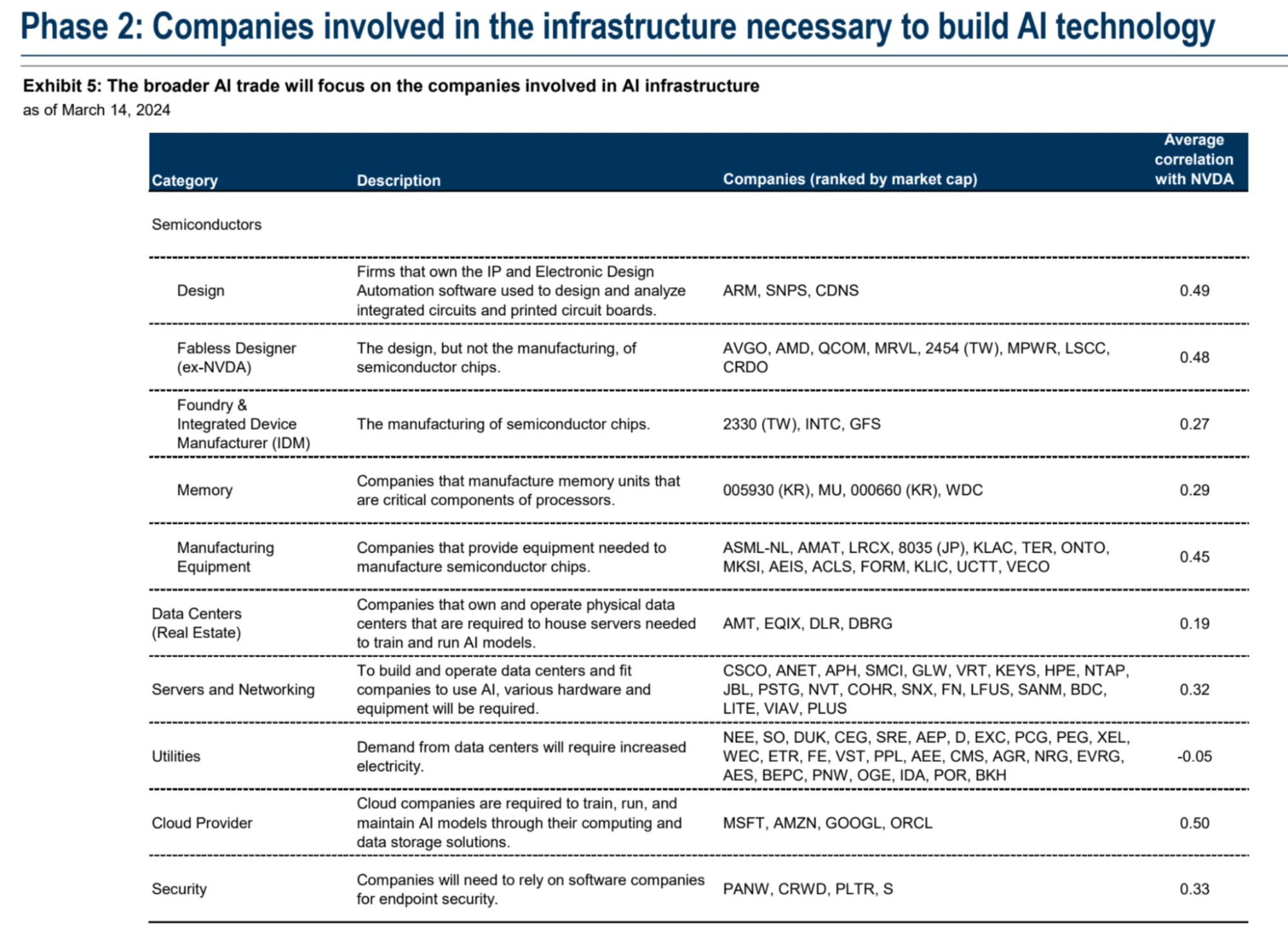
The third phase focuses on companies that can increase revenue through AI technology, and the fourth phase will focus on companies that can increase productivity through AI technology.
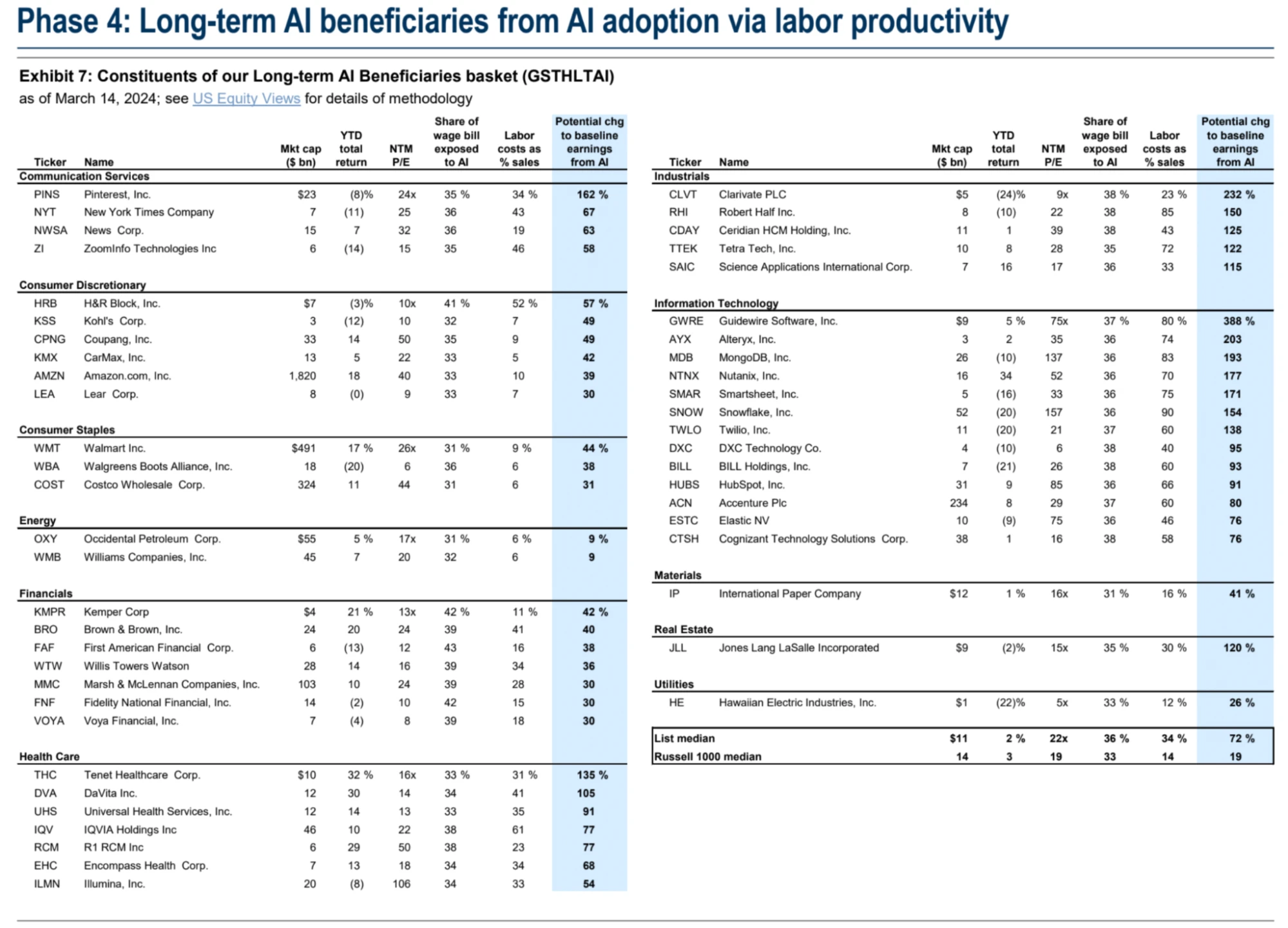
The report also discussed rising investor enthusiasm for AI, but argued that this enthusiasm has not yet reached historical bubble levels.
Valuations have improved for most companies in the second phase, but earnings revisions have varied widely. Stocks to watch include Synopsys, chip design software company Monolithic Power Systems, wireless and broadcast communications operator American Tower and electrical department equipment company Vertiv, among others.
The third stage is the AI-enabled revenue stage, focusing on companies that integrate AI into their products to increase revenue, such as software and IT services companies. In addition to well-known large technology companies, cloud service provider Cloudflare, software design company Autodesk, database company MongoDB and cloud service provider Nutanix are also potential stocks.
Goldman Sachs noted that Stage 3 stocks have returned 8% year-to-date, and although excess returns in these stocks are driven by factors other than AI, investor attention is rising in these stocks.
The final fourth phase is the productivity improvement phase, which focuses on companies in various industries that use AI technology to improve production efficiency, especially labor-intensive industries such as software services and business services, which are vulnerable to AI automation.

The top AI concept market value rankings on the blockchain track are basically platform/infrastructure projects at the software level.
NVIDIA GTC 2024: In addition to B 100, also look at the application side
From March 18th to 21st, NVIDIAs annual AI conference GTC (GPU Technology Conference) 2024 will be held at the San Jose Convention Center in the United States, at 1 pm on March 18 (Monday) (4 am on Tuesday, March 19, Beijing time) , NVIDIA CEO Jensen Huang will give a speech with the theme of 1 #AI Conference for Developers.
As one of NVIDIAs most important release platforms every year, GTC has become a recognized AI weather vane. This GTC is also the first time it has been held offline in five years.
According to NVIDIA, Huang Renxun will release the latest breakthrough results in accelerated computing, generative AI and robotics. The market generally believes that there are four focuses of this conference: 1. Next-generation Blackwell GPU architecture, 2. New B 100 chip, 3. Humanoid robots, 4. AI + medicine. In addition, NVIDIA will also release a series of generative AI applications, which may become its new growth point.
Wall Street expects this GTC to help Nvidia stock end its recent choppy moves and continue its strong growth of more than 80% so far this year.
On the eve of the GTC conference, AI concept cryptocurrencies have rebounded significantly:
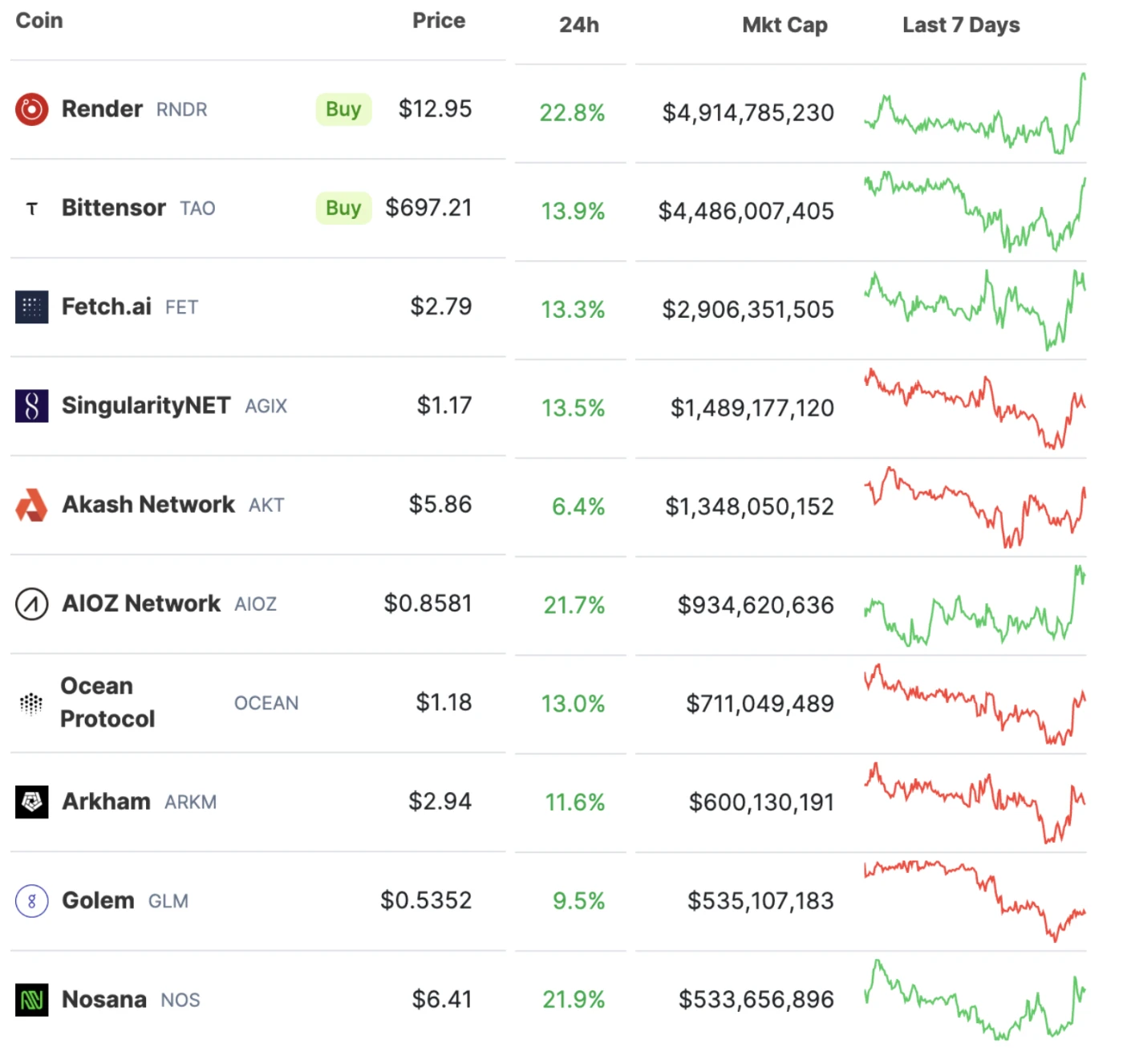
JPMorgan Chase: ETH will be Coinbase’s next driving force
JPM issued a report on Friday that the cryptocurrency ecosystem is in the midst of a substantial increase in participation, which will benefit Coinbases revenue growth in the short term. The report focuses on the importance of Ethereum (ETH) to Coinbase’s business and revenue. Ethereum YTD is up 70%, surpassing the $4,000 mark. The report estimates that Ethereum-related services will contribute approximately $230 million in revenue to Coinbase in the first quarter of 2024, accounting for 23% of incremental revenue.
Ethereum successfully completed the Dencun upgrade on March 13, 2024, which is expected to expand the capacity of the Ethereum ecosystem and reduce second-layer network transaction fees. The upgrade is expected to drive growth in the cryptocurrency market, thus benefiting Coinbase in the long term.
It is expected that the Ethereum ETF may develop in a similar trend to the recently launched Bitcoin ETF, with strong inflows and price increases. This could lead to more incremental revenue for Coinbase’s Ethereum trading business in the second quarter of 2024 and beyond.
Raise Coinbase price target to $150 from $95 previously, with details on valuation assumptions:
Cryptocurrency market capitalization remains unchanged at $2.7 trillion
Trading volume is 13.5% of market cap
The commission rate for retail transactions is 1.2%, and the commission rate for institutional transactions is 0.025%.
Risk-free interest rate 3.5%
Staking business estimates are based on a “normalized” Ethereum price of $4,000
Net profit margin is 14%, corresponding to a price-earnings ratio valuation of 40 times
Coinbase is expected to generate annual profits of approximately $375 million
With Coinbase currently trading above $240, the stock price may be reflecting overly optimistic expectations.
10xResearch: Bitcoin may adjust to $63,000
10xResearch released a latest report (author Markus Thielen) stating that the prospects for Ethereum ETF approval seem less optimistic; recent inflation data from Europe and the United States have been released, and central bank officials’ reluctance to commit to interest rate cuts has further hit market sentiment, leading to a decline in market sentiment during the Asian trading session. There was a Bitcoin sell-off.
Given these factors, Bitcoin could drop to 63,000 as a potential target before resuming the uptrend.
Additionally, altcoins closely tied to Ethereum’s rally may have reached a short-term top, with tokens like SHIB seeing significant volume surges.
sentiment indicator
